

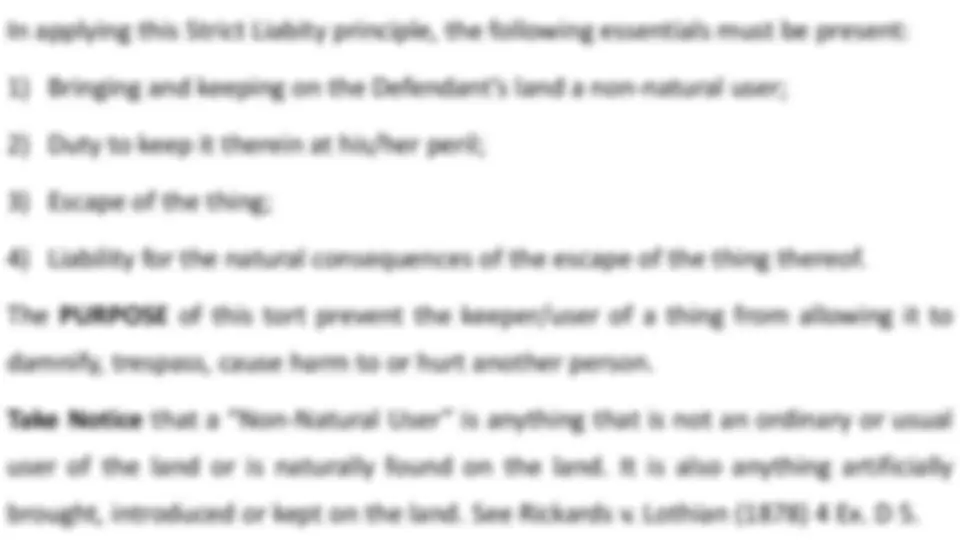
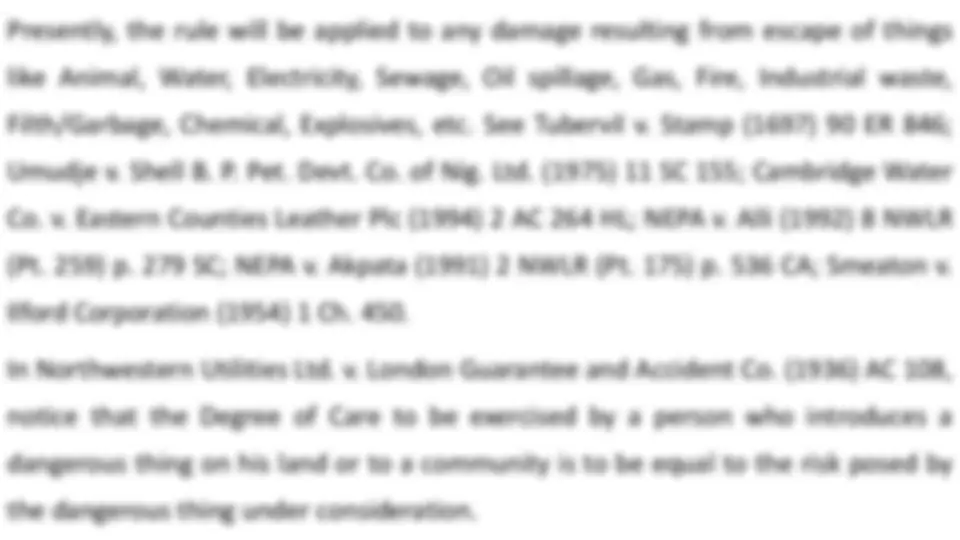
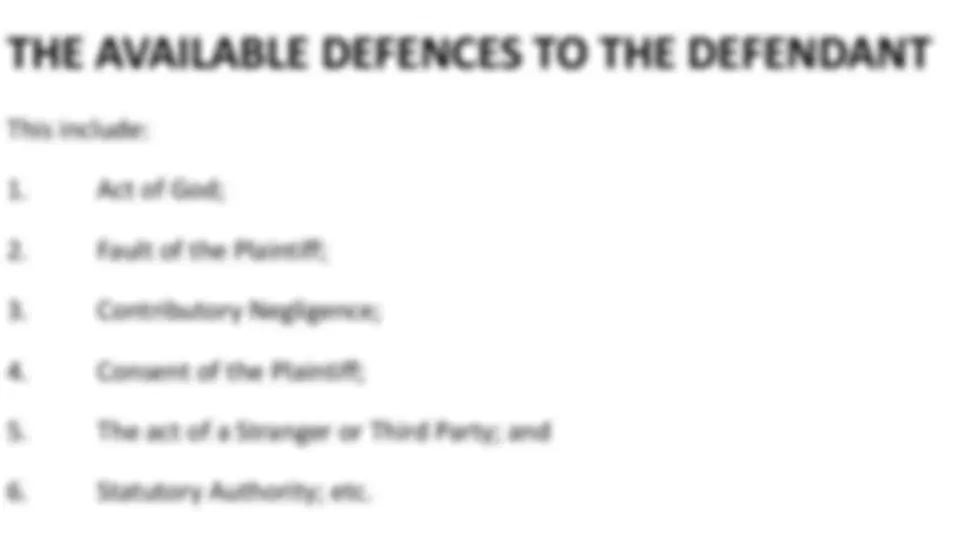
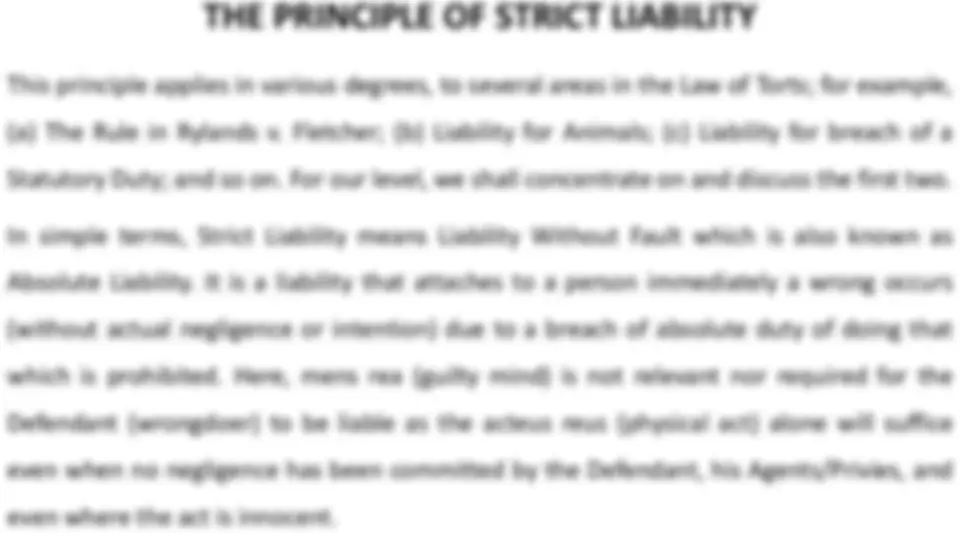
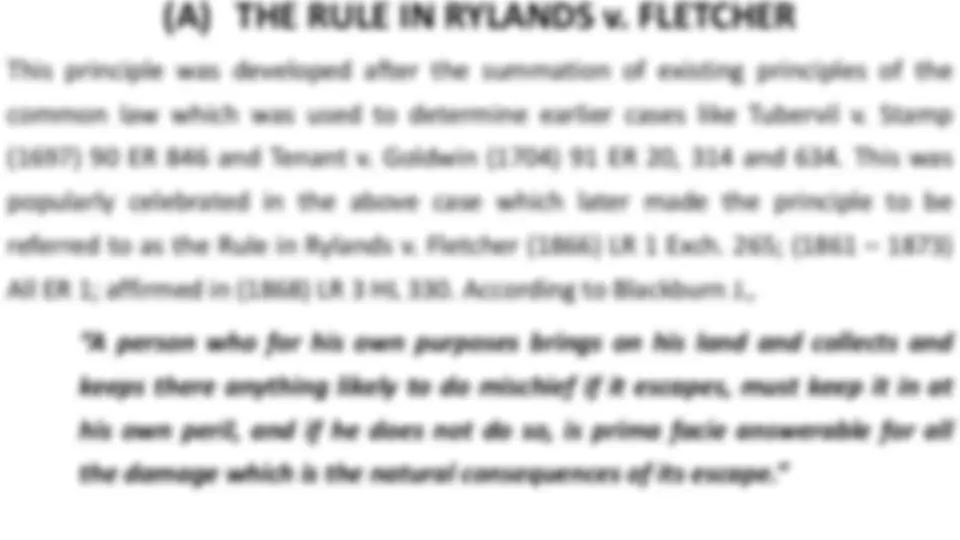
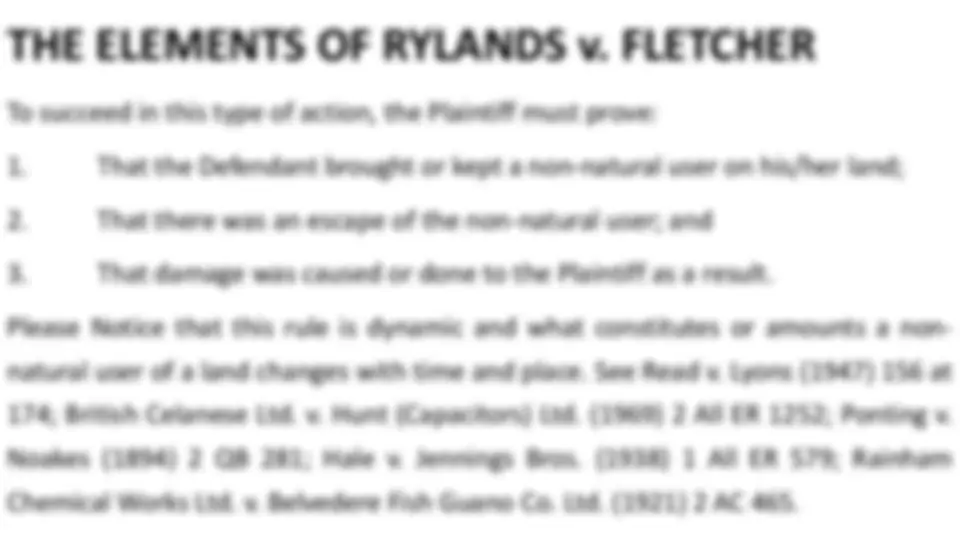
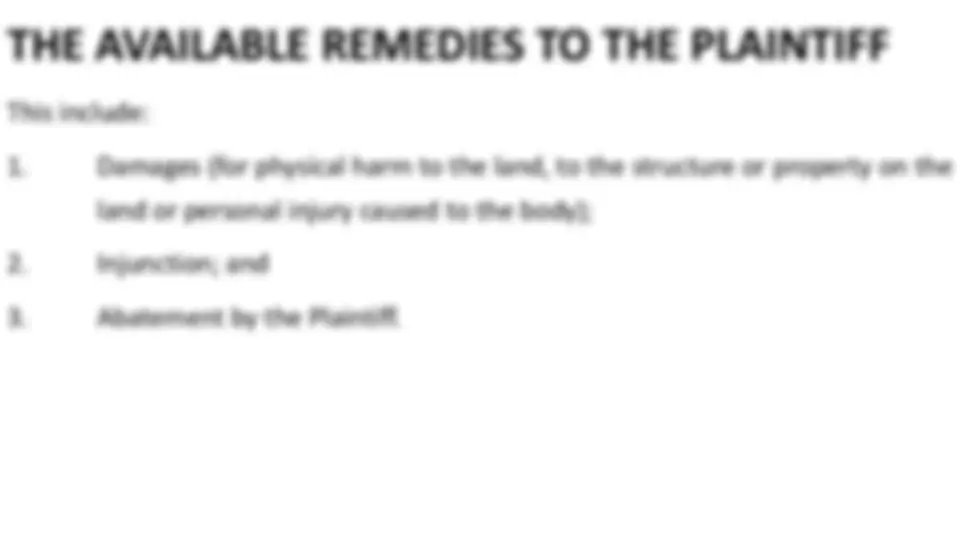
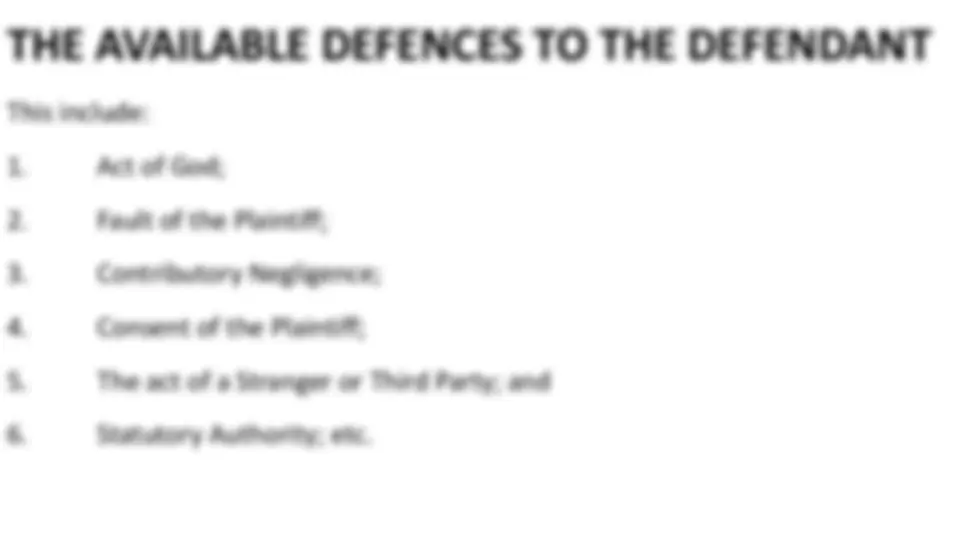
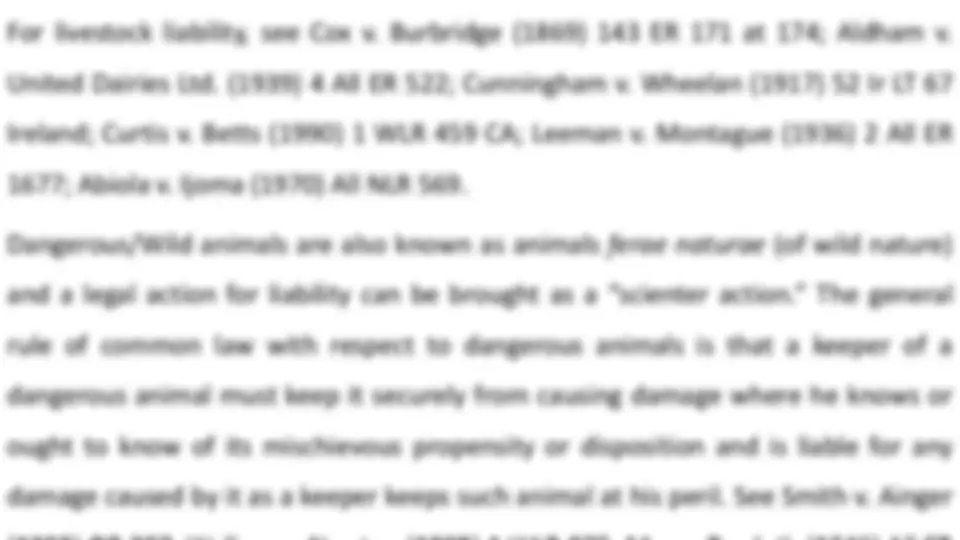
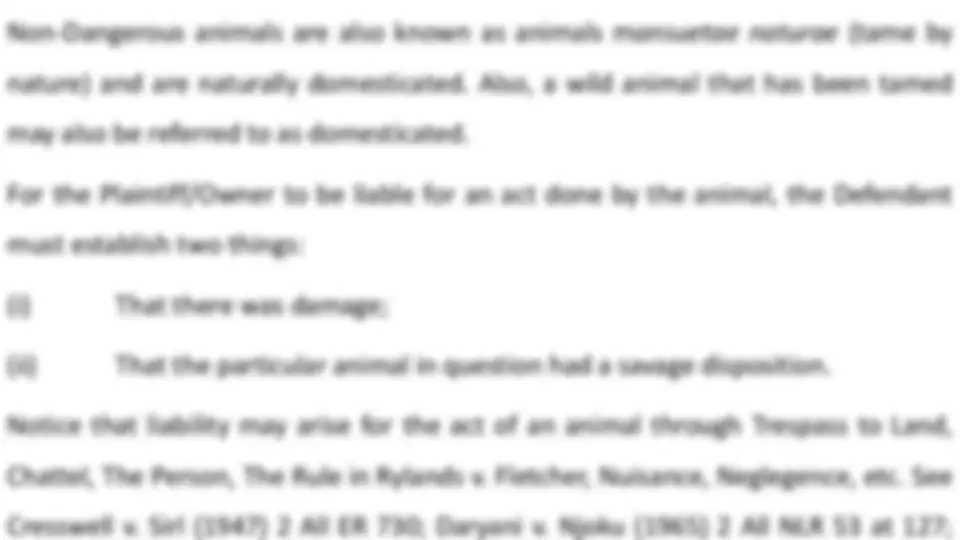
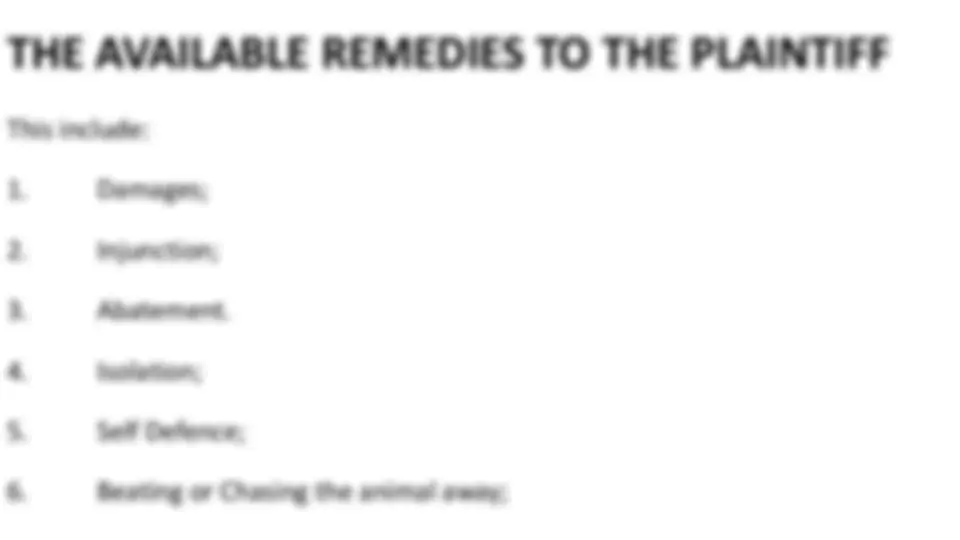
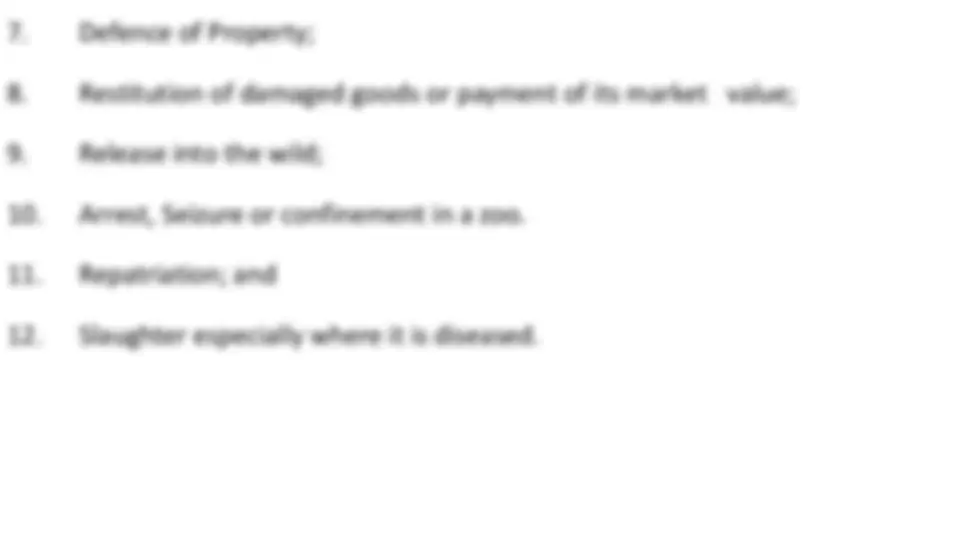
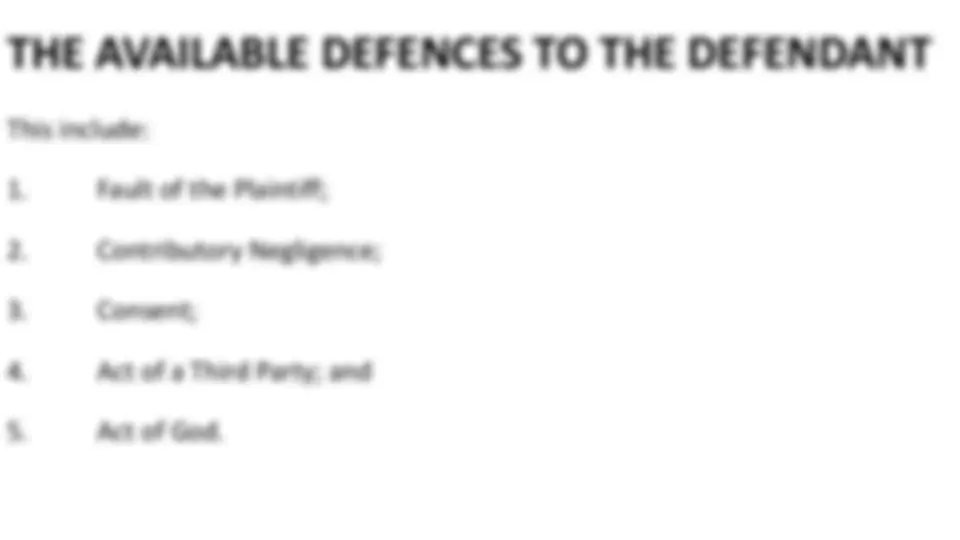


Study with the several resources on Docsity

Earn points by helping other students or get them with a premium plan


Prepare for your exams
Study with the several resources on Docsity

Earn points to download
Earn points by helping other students or get them with a premium plan
Community
Ask the community for help and clear up your study doubts
Discover the best universities in your country according to Docsity users
Free resources
Download our free guides on studying techniques, anxiety management strategies, and thesis advice from Docsity tutors
Here, mens rea (guilty mind) is not relevant nor required for the Defendant (wrongdoer) to be liable as the acteus reus (physical act) alone will suffice even ...
Typology: Study notes
1 / 22

This page cannot be seen from the preview
Don't miss anything!















This principle applies in various degrees, to several areas in the Law of Torts; for example, (a) The Rule in Rylands v. Fletcher; (b) Liability for Animals; (c) Liability for breach of a Statutory Duty; and so on. For our level, we shall concentrate on and discuss the first two. In simple terms, Strict Liability means Liability Without Fault which is also known as Absolute Liability. It is a liability that attaches to a person immediately a wrong occurs (without actual negligence or intention) due to a breach of absolute duty of doing that which is prohibited. Here, mens rea (guilty mind) is not relevant nor required for the Defendant (wrongdoer) to be liable as the acteus reus (physical act) alone will suffice even when no negligence has been committed by the Defendant, his Agents/Privies, and even where the act is innocent.
In applying this Strict Liabity principle, the following essentials must be present:
Presently, the rule will be applied to any damage resulting from escape of things like Animal, Water, Electricity, Sewage, Oil spillage, Gas, Fire, Industrial waste, Filth/Garbage, Chemical, Explosives, etc. See Tubervil v. Stamp ( 1697 ) 90 ER 846 ; Umudje v. Shell B. P. Pet. Devt. Co. of Nig. Ltd. ( 1975 ) 11 SC 155 ; Cambridge Water Co. v. Eastern Counties Leather Plc ( 1994 ) 2 AC 264 HL; NEPA v. Alli ( 1992 ) 8 NWLR (Pt. 259 ) p. 279 SC; NEPA v. Akpata ( 1991 ) 2 NWLR (Pt. 175 ) p. 536 CA; Smeaton v. Ilford Corporation ( 1954 ) 1 Ch. 450. In Northwestern Utilities Ltd. v. London Guarantee and Accident Co. ( 1936 ) AC 108 , notice that the Degree of Care to be exercised by a person who introduces a dangerous thing on his land or to a community is to be equal to the risk posed by the dangerous thing under consideration.
This include:
This include:
(A) THE RULE IN RYLANDS v. FLETCHER This principle was developed after the summation of existing principles of the common law which was used to determine earlier cases like Tubervil v. Stamp ( 1697 ) 90 ER 846 and Tenant v. Goldwin ( 1704 ) 91 ER 20 , 314 and 634. This was popularly celebrated in the above case which later made the principle to be referred to as the Rule in Rylands v. Fletcher ( 1866 ) LR 1 Exch. 265 ; ( 1861 – 1873 ) All ER 1 ; affirmed in ( 1868 ) LR 3 HL 330. According to Blackburn J., “A person who for his own purposes brings on his land and collects and keeps there anything likely to do mischief if it escapes, must keep it in at his own peril, and if he does not do so, is prima facie answerable for all the damage which is the natural consequences of its escape.”
In applying this Strict Liability principle, the following essentials must be present:
To succeed in this type of action, the Plaintiff must prove:
This include:
Animals are either reared or kept for different purposes all over the world; either for Food, Commercial purposes, as Pets, for Entertainment, Study, Export, etc. and these animals may either be domestic or wild. While one may be free to keep animals (fish, reptile, etc.) insects or birds as one pleases, the presence of certain animals in a neighbourhood may cause threat to life or property or even be a nuisance sometimes. A keeper of an animal may therefore, be liable for bringing as animal into his premises or country without proper immunization, or even for not treating it as required by law or for any injury or damage that may be occasioned by such animal to a person or property and/or for the spread of any disease caused by it.
The general rule is that a person keeps an animal at his own risk and is liable for any injury or damage done by it thereby its liability STRICT. See Rapier v. London Tramways Co. ( 1893 ) 2 Ch. 588 ; Gomberg v. Smith ( 1962 ) 1 All ER 725. There are basically two classes of animals; namely: (i) Domestic Animals; and (ii) Wild Animals. For the purpose of tortious liabilities however, they are further divided into three: i) Livestock; e.g. Cattle, Sheep, Pigs, Goats, Poultry, Horses, Donkeys, etc.; ii) Dangerous/Wild Animals; e.g. Wild dogs, Wolf, Snake, Lion, Tiger, etc; and
Non-Dangerous animals are also known as animals m ansuetae naturae (tame by nature) and are naturally domesticated. Also, a wild animal that has been tamed may also be referred to as domesticated. For the Plaintiff/Owner to be liable for an act done by the animal, the Defendant must establish two things: (i) That there was damage; (ii) That the particular animal in question had a savage disposition. Notice that liability may arise for the act of an animal through Trespass to Land, Chattel, The Person, The Rule in Rylands v. Fletcher, Nuisance, Neglegence, etc. See Cresswell v. Sirl ( 1947 ) 2 All ER 730 ; Daryani v. Njoku ( 1965 ) 2 All NLR 53 at 127 ;
This include: